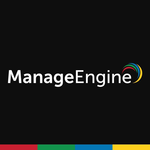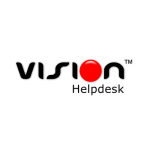What is most valuable?
When we selected it, it gave us a framework, a structure in the space of idle, which is real important to our company because understanding how we deliver service in the areas of incident management, request management, and change management in our company are very important. The reason that they're important is because it drives our SLAs for our customers. Service Desk gave us a structure that we sorely needed to be able to deliver reporting and metrics and make sure that we're staying on time and what we promised to our customers.
How has it helped my organization?
CA Service Desk benefits come in the fact that it gives you some aspects of automation, which is really key to our operation. We're not a typical help desk like most companies are that use Service Desk, we're a service center. While it is only used internally by our users, it touches our customers. Therefore, it's really important that we had a tool that was going to allow us to do things in a precise manner and do it in a way that gave it the structure and the automation - keeping people on track. Instead of training everybody on thousands of business processes, it's really important that our users be able to walk in, sit down, and know what to do because the tool is driving them to do their job. Versus, the user driving themselves.
What needs improvement?
One of the biggest things we're talking with CA about is the integration between CA and PAM. PAM is a powerful tool, in fact, CA PAM is the single most important employee in our company because it basically orchestrates well over two hundred thousand operations in a month's time and it has an extremely low failure rate. One of the issues that exists, and I don't know you can really call it an issue, but it's not there yet, it needs to be tighter integration between PAM and Service Desk and they understand that, because the PAM engine for driving business automation and workflows is so critical to our business and keeping us on schedule and doing things.
What do I think about the stability of the solution?
Very good. Our platform is a Windows based platform. We started off initially on a Linux based platform, but we found that it was best to migrate ourselves over to a Windows based platform. Ever since we have done that our availability, our failover, it's impeccable. It has been running at an average of 99.95 consistently now for the better part of the year.
Buyer's Guide
Clarity SM
January 2026
Learn what your peers think about Clarity SM. Get advice and tips from experienced pros sharing their opinions. Updated: January 2026.
879,899 professionals have used our research since 2012.
What do I think about the scalability of the solution?
The tool allows us to adapt to many processes across our company. We have a lot of silos because of our business units. Therefore, the practices or the processes that we use to support our customers or the products differ, they're not all the same. It's very difficult when you have that many type of products to support, to make the business process for one product be the same for another. Fundamentally they might seem like they're the same, but they have all their very distinct differences. Escalation points and so on and so forth and Service Desk has allowed us to do that.
How are customer service and support?
Excellent. I have a wonderful relationship with my account management team. We've had issues just like any other technology company. Nothing unusual, but I can tell you that the people that support me are there every second, every minute that we need them and they make sure that we're doing the things necessary to either get a problem resolved, or if we're doing some type of upgrade to our software, that type of thing, they will go trough every step of the way from a QA, to a dev environment, to our production environment, to make sure we're successful.
Which solution did I use previously and why did I switch?
First we adopted Idle in our company. The Idle framework. We needed a tool and we chose another company, It was FrontRange. The problem with FrontRange was it didn't have enough structure to it. When you're a young company implementing Idle, and you don't have the right structure in your tracking system, you can go off in fifty million directions and we did. We recognize that, we were having problems reporting. We were having problems telling ourselves how we were doing in delivering our service.
The tool had flexibility, but it gave far too much flexibility for what we needed, so we started to look again. Then, we met with CA, we talked to them about Service Desk and we started to understand what the structure was that CA Service Desk was going to bring to us. Yet give us the flexibility that we need, which is important, but it's not too flexible, it kept you sort of boxed in, and that's not a bad thing when you're doing adopting Idle. Therefore, when we measured CA Service Desk versus the other companies that we looking at and what we already had, we found that it was going to be the best solution.
Which other solutions did I evaluate?
Actually, no there weren't any other options. When we went through the list, when we were doing all of our due diligence, we measured five other companies against CA and then against what we had with FrontRange and we made the decision that it wasn't even worth the effort of really sitting down and talking negotiations with the other companies.
I give it a 10/10. It's because of the impact that it's had on our business. It now tells us how we should do our work. It now tells us how we can staff. It tells us how we're doing, and it's reliable. That in itself, that's the reason why. If you're truly an adopter of Idle, the reason I would tell you to choose Service Desk is because of the structure that it comes with, and the out of box features that it gives you. Which makes the job easy for implementing Service Desk, because we migrated from FrontRange over to Service Desk.
What other advice do I have?
We looked for, obviously, how does it work within the Idle framework. What kind of information do you get from it? How easy is it to report against? Metrics are key to any IT business. What about the automations, what kind of automations does it have already built in and what automations can you build in. When we were looking at the different companies that were out there, we looked for the company that was going to best meet all those criteria. Price, the cost of it, was important, but it was not the key decision.
We had a very flexible FrontRange system that had lots of data, but we were able to easily migrate all that data into Service Desk and into it's structured environment, which to me was huge. It made the job very, very easy. If you're going to look at a tool and you're going to make a decision, don't make it based upon cost. Make it based upon it's ability to deliver what you need to understanding your business and the service delivery industry.
Disclosure: PeerSpot contacted the reviewer to collect the review and to validate authenticity. The reviewer was referred by the vendor, but the review is not subject to editing or approval by the vendor.

















Geoff - you've used quite a few ITSM tools, what would you say are the top 3 things CA SDM can do vs. ServiceNow?